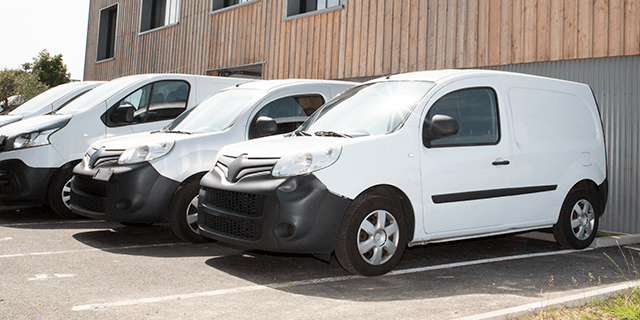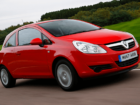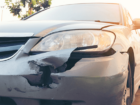Van insurance groups explained
What makes van insurance groups different to car insurance groups, and how can you use them to your advantage? Read the Mustard.co.uk guide.
If you’re shopping around for vans, you’ll likely be looking for one that’s as cost-effective to run as possible. Insurance plays a huge part in this – and van insurance groups play a huge part in how much it costs.
This article covers the ins and outs of van insurance groups to help you understand how you could use them to lower the cost of your cover, as well as how to check your van insurance group. And remember, you can always search for a van insurance quote right here on mustard.co.uk.
What is a van insurance group?
Like with cars, van insurance groups are a rating given to every van on sale by an independent authority, funded by insurance providers. They’re used by insurers as a factor in calculating premiums – generally, vans in higher groups will cost more to insure.
Insurance groups are based on a variety of factors. They include:
- Parts and repairability: Vans with cheap parts that are easy to repair will be in a lower group
- Van performance and engine size: Fast vans with powerful engines will be in higher insurance groups
- Purchase price: An expensive van to buy is an expensive one to replace – therefore, higher cost means higher insurance group
- Safety & Security: A secure van is less likely to be the victim of theft, while a safe one better protects its occupants from injury. Both bring down insurance prices
How are van insurance groups different from cars?
Car insurance groups run from 1-50, with 1 being the lowest. You can find more on car insurance groups here.
Van insurance groups do the same, but things are a little different. Before 2016, vans were classified on a scale from 1-20 in the same way as cars. In 2016, the industry moved to a 30-group system, but to avoid confusion the new groups were numbered 21-50. Lower numbers are generally the cheapest vans to insure.
This means that the lowest van insurance group was 1 in 2015, and 21 in 2016. This is well worth remembering if you’re buying a used van, as you may well straddle this deadline – and comparing insurance groups is difficult when they’re on completely separate scales.
After all, even though van insurance groups 20 and 21 are right next to each other, one is the highest of the old system and one is the lowest of the new. This is why you need to take note of when a van was first registered.
How do I find out my van’s insurance group?
Your van’s manufacturer will be able to tell you what insurance group your particular van is in – remember that different trim levels may fall into different groups.
Specification sheets will be available online, and if you’re comparing several different vans it’s always useful to have these anyway – not only will they tell you insurance groups, you’ll be able to compare pricing, optional extras and technical specs to make sure you’re getting the right van for your needs.
As a very basic guide, look to the table below:
- Groups 21-30 Groups 31-40 Groups 40+
- Ford Fiesta van Peugeot Expert Mercedes Sprinter
- Citroen Berlingo Ford Transit Custom Volkswagen Crafter
- Vauxhall Combo Renault Trafic Ford Transit
As you can see, van insurance groups broadly follow size – with small vans in low groups and large vans in higher ones. You’ll also see differences depending on what kind of van you have with high-spec crew vans likely to command higher premiums than bargain-basement chassis cabs.
The easiest way to compare several different vans, though, is to use one of many online services. Thatcham Research, one of the authorities that issues insurance and security ratings, has a checking service that’s free to use.
What are van security ratings?
Security ratings are issued alongside insurance groups and play a role of their own in determining premiums. They’re rated by a letter, and are as follows:
- A – an acceptable level of security
- D – does not meet the prescribed level of security and consequently the insurance group will increase
- E – exceeds the standard security features required which means the insurance group can be reduced, so for example a group 29 van with excellent security becomes a group 28E
- G – grey import, which means the van was not originally meant for the UK market
- P – provisional, this means there wasn’t enough security information about the van when it came onto the market.
What are the cheapest vans to insure?
The same principles apply to van insurance groups as they do cars – and so generally, the cheapest vans to insure are small vans.
That’s not a bad thing, though – if you only have lightweight needs, the latest crop of small vans on the market are remarkably good.
If you need more payload or carrying capacity, then look for a low-powered van, with plenty of safety and security features. Most modern vans are good for this, but it’s not always a given; even with a brand-new example, some commercial vehicles are based on underpinnings that go back decades.
Some models will also offer greater repair-ability than others, with bumpers designed in easy-to-remove separate panels so that a minor fender bender doesn’t necessitate replacing the whole front end of the vehicle.
How can I lower the cost of my van insurance?
Although insurance group plays a part in deciding your premium, it’s not the only factor.
For example, your driving history has a big effect on the cost of your insurance and to keep premiums at their lowest, you’ll need a clean, unblemished driving record free of driving convictions. This can be difficult if you’re a young driver, and unfortunately only time can fix that particular problem… but you can check out our tips for young van drivers here.
Other ways to keep the cost of cover down include:
Keeping modifications to a minimum – in most cases modifications are frowned upon as they can make your van more expensive to repair (or more desirable and attractive to thieves).
Increasing your van’s security – one of the exceptions to the no modifications rule, is to add an approved security system or alarm to your van. It also helps if you can keep your van somewhere safe overnight (a locked garage is the ideal). Factory-fitted and third-party GPS trackers are particularly useful.
Increasing your voluntary excess – you can lower your overall insurance cost by increasing the amount of excess you pay. Just bear in mind that you need to be able to afford it if you do actually need to make a claim.
Pay upfront – although it’s a big chunk of money, paying for your insurance annually can work out cheaper than paying in monthly installments taking into account admin fees.
Providing accurate information – be as accurate as possible when you tell your insurer how many miles you do or what you use your van for. Overestimating your mileage can push you into the next price bracket (but be aware that grossly underestimating can invalidate your policy). Similarly, if your van’s only for personal use then say so, this ensures your policy best reflects your needs.
Sign-writing your van – if you use your van for work then sign-writing your business details on it can be a beneficial modification. It makes your van easy to identify and therefore, less likely to be stolen.
Build up your no claims bonus – not making insurance claims and building up your no claims discounts can also help lower premiums.








